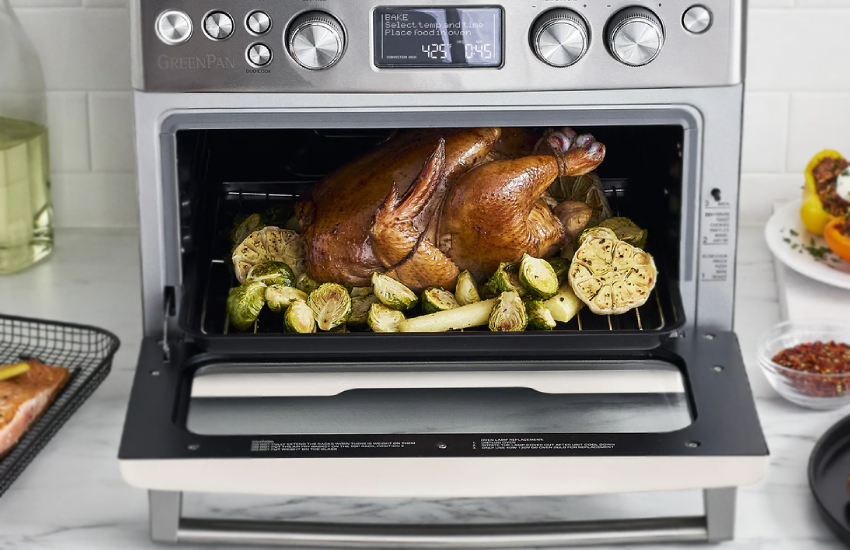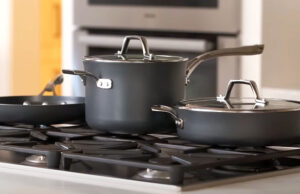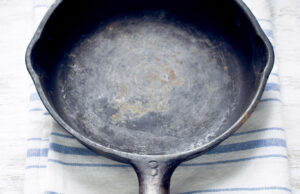If your convection oven isn’t cooking food as quickly as you’d like, you’re not alone. Whether it’s taking too long to roast vegetables, bake a cake, or cook a chicken, slow cooking times can be frustrating. But before you throw in the towel, there are several quick fixes that can help improve your convection oven’s performance. In this guide, we’ll go over common issues and simple solutions to get your oven cooking faster and more efficiently. Let’s get started with these easy-to-apply fixes!

1. Make Sure the Oven Is Clean and Free of Blockages
One of the first things you should check when your convection oven is cooking too slowly is cleanliness. Over time, dirt, grease, food particles, and even accumulated smoke can clog the internal fans and vents. This prevents the hot air from circulating properly, which is essential for the even cooking convection ovens are known for.
Why Cleaning Helps Speed Up Cooking
When the oven is clogged with grease or dirt, it blocks airflow, making it difficult for the hot air to reach your food evenly. This means your food might take longer to cook and may not cook as evenly as it should. Clean your convection oven regularly to maintain optimal airflow and heat circulation, ensuring your food cooks faster and more evenly.
How to Clean Your Convection Oven
- Unplug the oven: For safety, always disconnect your oven from the power supply before cleaning.
- Remove racks and trays: Take out all removable parts like racks, trays, and baking pans. Clean these separately in warm soapy water.
- Wipe down the interior: Use a damp cloth or sponge with mild dish soap to wipe down the oven walls and bottom. Avoid harsh chemicals that can damage the surfaces.
- Clean the fans and vents: If you can access the fans or vents, gently remove any dust and grease using a soft brush or a vacuum cleaner with a hose attachment. Ensure that no food debris or dirt is blocking airflow.
- Use baking soda for tough stains: If there are stubborn stains or burnt food inside, mix a paste of baking soda and water. Apply it to the stains and let it sit for 15-20 minutes before scrubbing it off.
- Check the door seal: Sometimes, the door seal can get dirty or worn out. Make sure it’s in good condition and clean to ensure there are no air leaks, which can slow down cooking.
Cleaning your convection oven regularly ensures proper air circulation, reduces cooking times, and prevents unpleasant odors. A cleaner oven works much more efficiently!
2. Preheat Your Oven Properly
It’s tempting to skip the preheating step when you’re in a rush, but this can significantly slow down cooking times. Preheating your convection oven is crucial for ensuring that the oven reaches the correct temperature before you start cooking. Without preheating, the heat may not be distributed evenly, which can cause your food to cook slower than expected.
Why Preheating Matters
Convection ovens rely on even heat distribution. If the oven isn’t preheated, the temperature will fluctuate while you’re cooking, resulting in uneven cooking. The convection fan won’t work properly, and your food may end up undercooked or overcooked. Preheating ensures that the entire oven is at the correct temperature, allowing the fan to circulate heat efficiently and cook your food faster.
How to Properly Preheat Your Oven
- Set the temperature: Select the temperature specified in your recipe, and allow the oven to heat up. If you’re cooking with convection, you may need to reduce the temperature by 20°F to account for the faster cooking time.
- Wait for the oven to beep: Many convection ovens have a preheat indicator that signals when the oven has reached the desired temperature. Wait for this notification before placing food inside.
- Give it extra time for large ovens: Larger convection ovens may need a few extra minutes to reach the right temperature. Wait at least 10 minutes before starting the cooking process.
- Use the fan-forced setting: For optimal results, use the fan-forced convection setting, which helps evenly distribute heat around your food.
By allowing your oven to preheat properly, you’ll cut down on cooking times and ensure that your food is cooked evenly.
3. Adjust the Temperature and Cooking Times
Sometimes, your convection oven may not cook food as fast as it should because of improper temperature settings. Convection ovens are more efficient than regular ovens, meaning they cook food faster at lower temperatures. If you’re using conventional temperature settings or recipes, your food might take longer than expected.
Why Temperature Adjustments Are Necessary
The main difference between a regular oven and a convection oven is the fan that circulates hot air. This circulation speeds up cooking, so you don’t need to use as high a temperature. If you use the same temperature settings as you would in a conventional oven, your food can easily become overcooked or dry before it’s properly cooked through.
How to Adjust the Temperature for Faster Cooking
- Lower the temperature: If you’re used to conventional oven temperatures, reduce the temperature by 20°F when using your convection oven.
- Check for doneness early: Convection ovens cook faster, so it’s always a good idea to check on your food 5–10 minutes before the usual cooking time to avoid overcooking.
- Use the convection mode for quicker cooking: If your oven has multiple settings, choose the fan-forced convection setting, as it will speed up cooking times.
By adjusting the temperature to suit convection cooking, you’ll save time and avoid undercooked or overcooked food.
4. Avoid Overcrowding the Oven
If you place too much food inside your convection oven at once, it can slow down cooking times and affect the quality of your food. Convection ovens work by circulating hot air around the food to cook it evenly. When you overcrowd the oven, the air can’t circulate properly, leading to uneven cooking and longer cooking times.
Why Overcrowding Hurts Performance
When there isn’t enough space for hot air to move freely, the food on the inside or edges may not cook as efficiently. This results in food that’s undercooked, unevenly cooked, or takes longer than it should to reach the desired doneness. Additionally, if you stack pans or trays too close together, the food on the bottom may not cook properly due to the lack of airflow.
How to Avoid Overcrowding the Oven
- Leave space between items: Ensure there’s at least 1–2 inches of space between each tray or pan. This allows the hot air to circulate freely, promoting even cooking.
- Cook in batches if necessary: If you have a large amount of food to cook, consider cooking it in smaller batches to give the air plenty of room to circulate.
- Rotate the trays: If you must cook multiple trays at once, rotate them halfway through the cooking time to ensure even cooking.
By giving your food room to breathe in the oven, you’ll improve both the speed and quality of cooking.
I hope this article helped you troubleshoot and fix your convection oven’s slow cooking problems! With simple changes like cleaning your oven, preheating properly, adjusting the temperature, and avoiding overcrowding, you can get your oven cooking faster and more efficiently. Enjoy your perfectly cooked meals in less time, and make the most of your convection oven!
Frequently Asked Questions
Is it okay to use aluminum foil in a convection oven?
Yes, you can use aluminum foil in a convection oven, but it’s important to use it sparingly. Avoid covering the entire oven rack with foil, as it can block airflow and affect cooking times.
Can I use a convection oven for baking bread?
Yes, convection ovens are great for baking bread! The circulating air helps to evenly cook the bread and create a beautifully browned crust. Just make sure to adjust the temperature by about 20°F lower than the recipe suggests.
Do I need to adjust my cooking times when using a convection oven?
Yes, since convection ovens cook food faster, you should reduce the cooking time by 10–20%. Always check on your food earlier than the suggested cooking time in a conventional oven.
Is it necessary to use the convection fan all the time?
No, you don’t always need to use the convection fan. You can turn off the fan for delicate dishes that require slower cooking, like soufflés or custards.
Can I cook frozen food in a convection oven?
Yes, convection ovens are great for cooking frozen food, especially frozen pizzas, fries, and other ready-to-cook meals. Just remember to follow the cooking instructions on the package.
Is it safe to use non-stick cookware in a convection oven?
Yes, non-stick cookware is generally safe to use in a convection oven. However, be sure that your non-stick pans are rated for the temperature you’re cooking at and that the coating is intact.
Can a convection oven be used for roasting vegetables?
Absolutely! Convection ovens are ideal for roasting vegetables, as the circulating hot air ensures they cook evenly and become crispy on the outside while remaining tender on the inside.
Do I need to turn the food while it cooks in a convection oven?
In most cases, you don’t need to turn the food while using a convection oven, thanks to the even heat distribution provided by the fan. However, for larger items, turning them halfway through may still improve the result.



